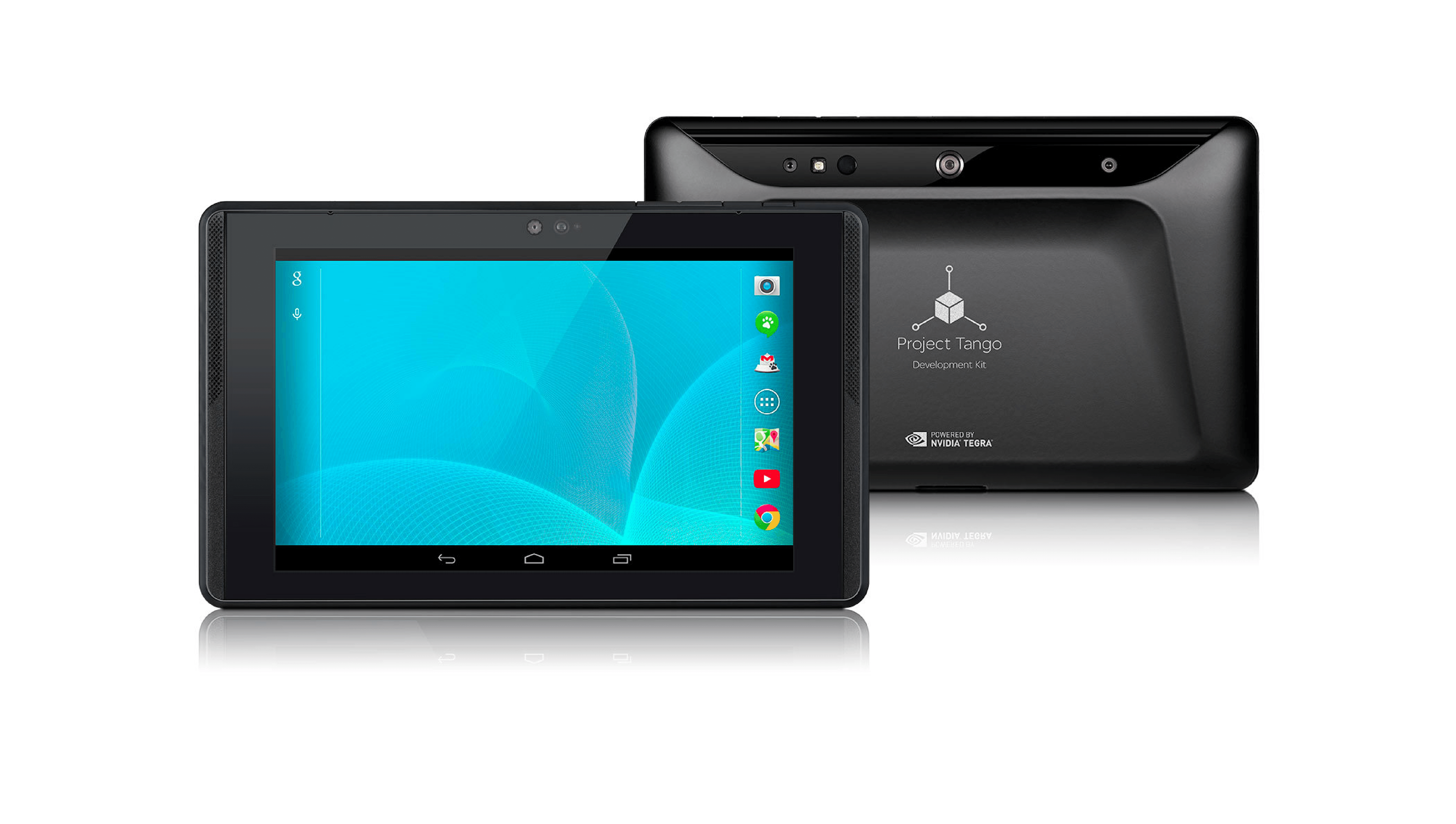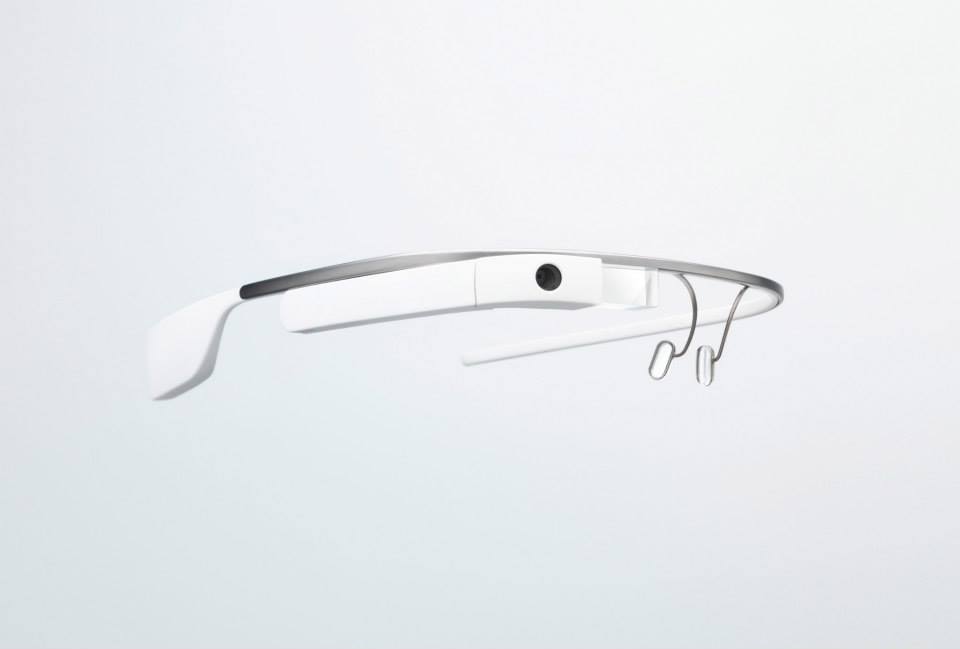Mobile Devices
Google’s Project Tango Tablet
This mobile device [Fig. 1] was designed from its inception for performing indoor localization and mapping. It is equipped with a 180 degree spherical camera and an RGB-D camera that measures the depth of the scene using IR. Furthermore, it carries an IMU that is used in conjunction with the camera for performing visual-inertial navigation. Regarding processing power, this device includes the Nvidia Tegra K1 processor, which is the first mobile processor that is CUDA enabled.

Figure 1: Google’s Project Tango tablet (Photo courtesy of Google)
Google Glass
The Google Glass [Fig. 2] was originally designed for ubiquitous computing. In addition to the optical head-mounted display (HUD), it is equipped with an IMU and a camera, whose measurements we use for performing visual-inertial sensor fusion onboard its OMAP 4430 SoC dual-core processor. Besides 3D localization and mapping, we use the Google Glass in virtual and augmented reality applications.
